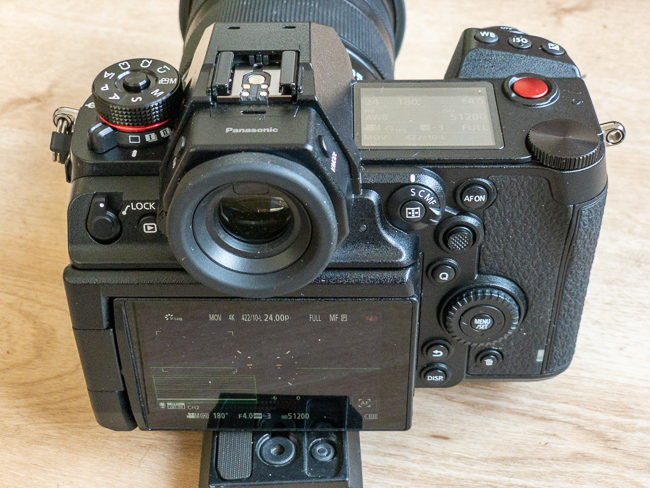
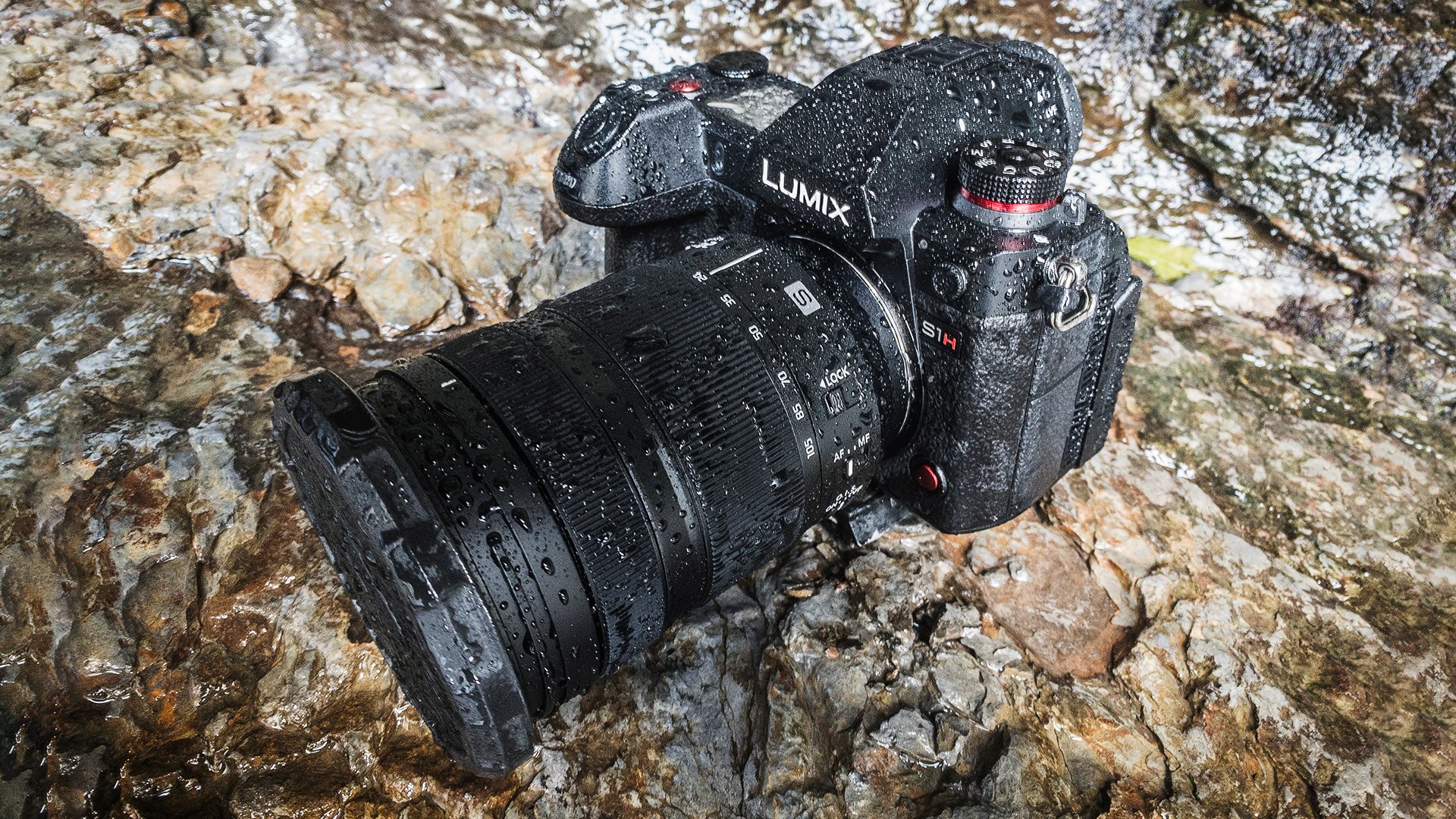 The Panasonic LUMIX DC-S1H pictured here showing off its incredibly solid weather-sealing.
The Panasonic LUMIX DC-S1H pictured here showing off its incredibly solid weather-sealing.
Panasonic S1H review: The Panasonic S1H, far from being just a slight iteration of the S1 line, is really an entirely different camera.
The Panasonic Lumix DC-S1H is a curious creature for one big reason. It's a hybrid stills camera that is wholly and primarily aimed at the cinema camera market. It can certainly take stills, and all that functionality is on the camera, just as it is on the other models in the S1 lineup. But not only is its primary function to take video, it has been completely redesigned to do so.
Build quality and features of the S1H
The camera body
Make no mistake, both the S1 and S1R, are built like tanks. Nobody of sane mind could ever accuse them of being 'flimsy'. They are both designed to take the rigours of day-to-day work in their stride, with full weatherproofing all part of the package.
And then there's the S1H. The new camera has the same excellent build quality as the previous ones, but it is noticeably bigger. The body is deeper to accommodate the additional cooling system, as well as a much larger illuminated top LCD display. This shows current camera settings, including things like shutter angle, ISO etc. It has been designed to display much more information than the other S1 cameras.
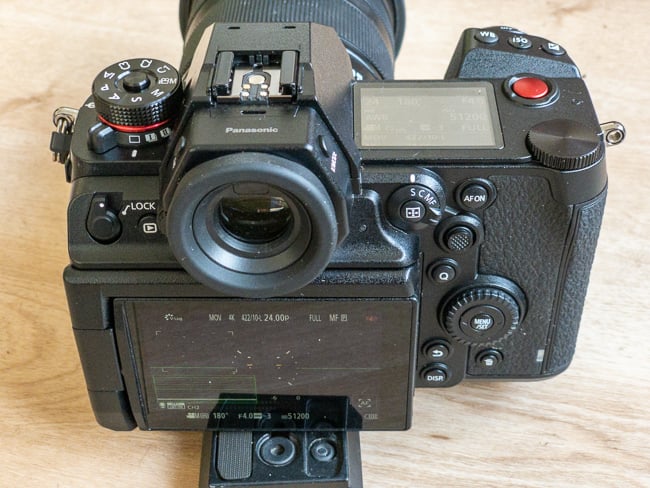
The Lumix DC-S1H looks superficially similar to the other S1 cameras, but its body design is quite different
Rear LCD display and controls
The rear LCD display is the most prominent difference. This juts out slightly to allow room for the new cooling vents, but the monitor is also new. It is slightly smaller than the ones on the S1 and S1R, but it is more easily adjustable and will flip out to the left and side, which the display on the other cameras cannot do. The tilt and flip mechanism seems more robust than on the other cameras, too.
The on/off switch is now a switch that goes around the shutter release button, so it is a smidgen easier to power it on and off when hand holding it. Then there are the prominent metallic red record buttons situated on the top, rear, and the front of the camera. I'm not totally sure of why these were needed in any practical sense since the shutter button functions just as well as a record button! But hey, it looks cool. Most other physical controls are as per its stablemates.
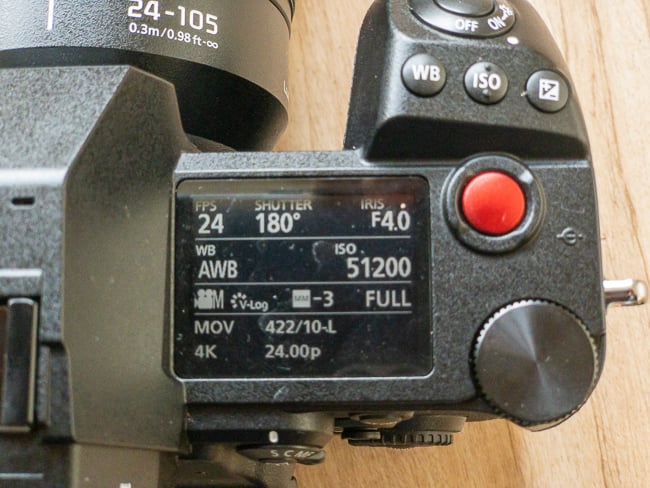
The Lumix S1H has a much larger, and more detailed information display on top of the body than the other S1 cameras
Recording media
Another prominent difference is that the S1H can only record internally to SD cards. So you now have two SD card slots as compared to one SD slot and one XQD. This is a sensible decision to my mind, and I'm not fully sure why XDQ was fully necessary on the other cameras, especially when there's no high bitrate video recording on them, and modern SD cards are very fast.
Superficially the S1H looks similar to the other S1 cameras, as if Panasonic has just added a few bits here and there. But a closer look shows that the body design is new. Inevitably cages that work on the S1 and S1R will not fit the S1H very well. I managed to shoehorn it into my SmallRig cage but there's an intolerance causing it to be ever so slightly out of alignment such that the bottom of the camera won't go completely flush to the cage.
It's designed for cinematography
The realisation that the S1H is a much more serious beast for cinematography comes when you open up its setup menus. These have the same look and feel as the other cameras, but they contain a lot more setup pages. There are the simple things, such as being able to setup the shutter to display as an angle rather than as a fraction of a second (pretty please Panasonic, can we have a 1/48th shutter on the S1?), and then there are the real stand out differences, such as being able to put the camera into a 24hz mode for true 24p recording, as opposed to 23.98 of its sisters.
Options for bitrates are more extensive, with 10-bit 400Mb/s intra-frame being on offer, as well as resolutions going all the way up to 6K. You'll need a top of the range SD card to record at these settings internally.
Slow motion junkies will be happy to know that the slow motion modes on the S1H now have manually controllable exposure. It is somewhat of a mystery why the S1 doesn't have manual control over these modes, but for people who have held out for the S1H, and can afford it, the way that the S1H handles these modes is much more sensible.
Optical low pass filter and extra recording modes
One last physical difference that the S1H possesses is an optical low pass filter (OLPF) to reduce moire. I can't say that I've noticed much in the way of moire on the S1, but it is another demonstration of how the S1H is optimised for moving imagery.
Now, the camera is touted as being 6K capable, and this is one of the its main headline features. Internally this takes a couple of forms. You can record a full 6K (5952 x 3968) with 4:2:0 colour precision and 10-bit colour at 200Mb/s. This is taken at a 3:2 aspect ratio and uses all of the sensor area. A 5.9K mode (5888 x 3312) is also available and this will be more useful being a 16:9 ratio, again at 200Mb/s. A 5.4K mode is also available at 3:2 ratio.
But that's not the end of the story. A firmware is in development in partnership with Atomos that will output 5.9K and 4K raw video data over HDMI to devices like the Ninja V.
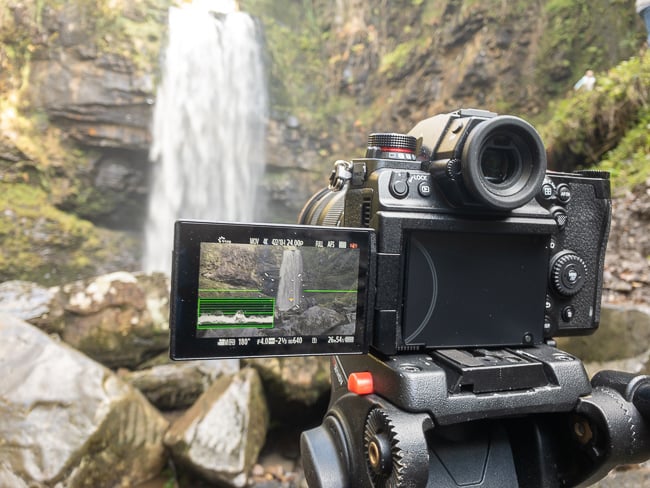
The Panasonic Lumix S1H is portable enough and weatherproof enough to handle some of the harshest environments... Including Wales!
Picture quality
For the most part if you put footage taken on the S1 next to that taken with the S1H you wouldn't notice any differences immediately. But the devil here is in the detail. Just like the S1, once the V-log footage is corrected for your display, the dynamic range is high, and colours are incredibly good, showing off the autumn colours in the test footage well.
The footage below was processed in DaVinci Resolve using a transform function to bring it back to Rec.709, with some minor exposure corrections here and there. So far so colourful. But the biggest difference I noticed between the S1 and the S1H was when it came to noise levels.
Noise levels
RedShark readers might recall we did an article recently asking whether the S1 had the same dual gain circuit (dual native ISO) functionality as the S1H due to the way the noise behaved once the camera reached 4000 ISO.
Now that I have used the S1H I can confirm that the noise performance does look very similar, and there does seem to be the same sort of noise shift going on at ISO4000. Go to the links below to download files straight from the camera where I move the gain up through the ISO range, along with an alternative file from the S1H, both going from ISO640 to ISO51200. These aren't aligned in terms of timings, but if you scrub through you can see the point where ISO4000 is hit on both cameras.
At first I thought the noise performance was different. Watching the waveform on each cameras LCD display doesn't show the same sort of behaviour for some reason. But looking at the untouched files noise would appear to be very similar. Note that to save file sizes I used the LongGOP codec for these files, so some of the noise may appear to have compression artefacts.
Panasonoic Lumix DC-S1 noise test file
Panasonic Lumix DC-S1H noise test file
We contacted the engineers at Panasonic and they told us that the sensor in the S1H is not the same one as in the S1, mentioning specifically that the S1H has dual native ISO as a major difference, although they didn't elaborate on why the S1 itself seems to exhibit similar traits. I'll let the two video files speak for themselves and you can make up your own minds!
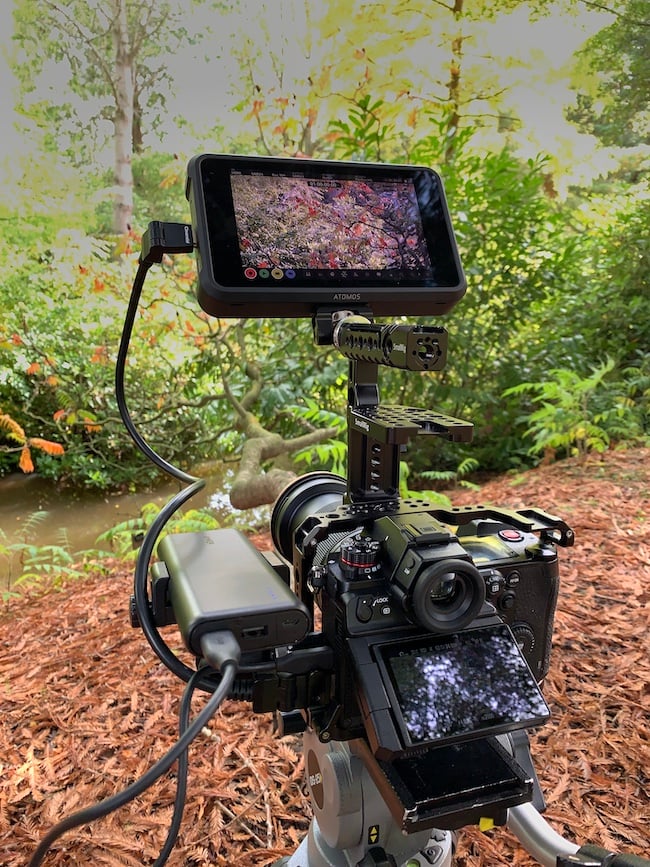
The SmallRig S1 cage works, sort of. But the difference in body dimensions means that you will one specific to the S1H for a truly good fit.
Is the Panasonic S1H for you?
Competition in the market is hotting up, so the S1H is up against a lot. At around US$4K for the body alone it is around US$1.5K more than the S1, which isn't a minor difference.
The key decision you have to make is whether 1) video functionality is an absolute priority, and 2) whether the overall features, including stills abilities, is enough to warrant such a hybrid camera.
For ultra-low budget filmmakers, the inclusion of a true 24P mode and intra-frame recording may well give it an edge, and the forthcoming ProRes RAW update will give it yet further capabilities. You also gain 10-bit 60p internal 4K recording over 8-bit on the S1.
It is true that there are cameras from the competition that offer many of these video capabilities at a lower price. But not all of them. Restrictions range from smaller sensor sizes to much more limited frame rates. So the ultimate decision will be over which specific features are important to you. The S1H has a lot more shooting options than its nearest competitors.
I can say with confidence that if you want a camera that will literally function as a do-it-all powerhouse for both stills and video, the S1H comes very close indeed to being the perfect vehicle, and it fixes most of the niggles users had with the S1. It is built to last, with very effective weather proofing - this got a very good test in the heavy rain we recently had, and is something you will not really find on any dedicated camcorder. As long as you aren't using any external devices like monitors and the XLR adaptor.
The picture quality is immensely good in the right hands. The S1 series in V-log modes are not shoot-and-forget. So you need to consider this in your intended post workflow. But when you think about what the S1H gives you stills wise as well as with video, the price suddenly doesn't seem like such a barrier.
Tags: Production


Comments